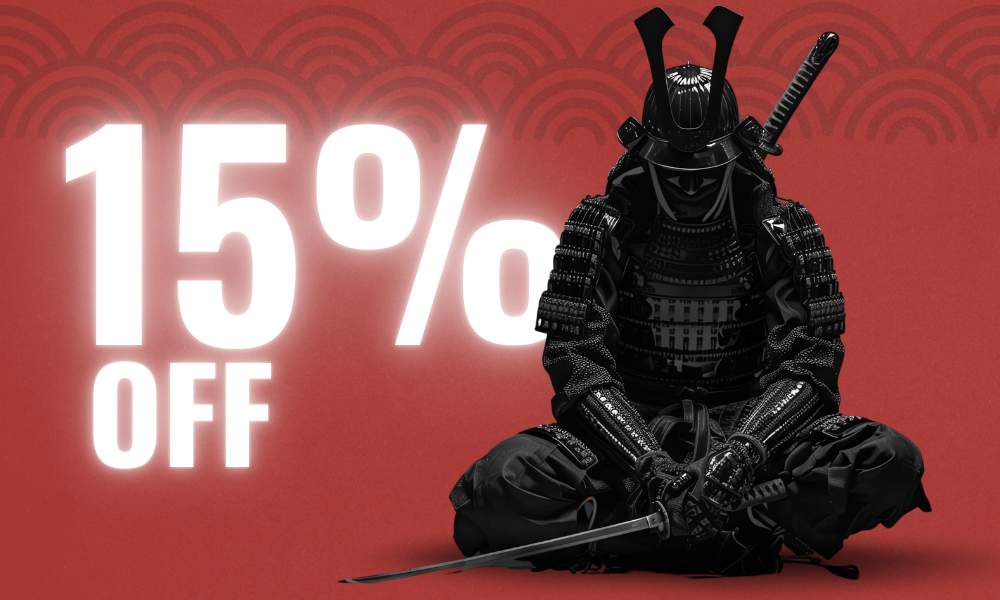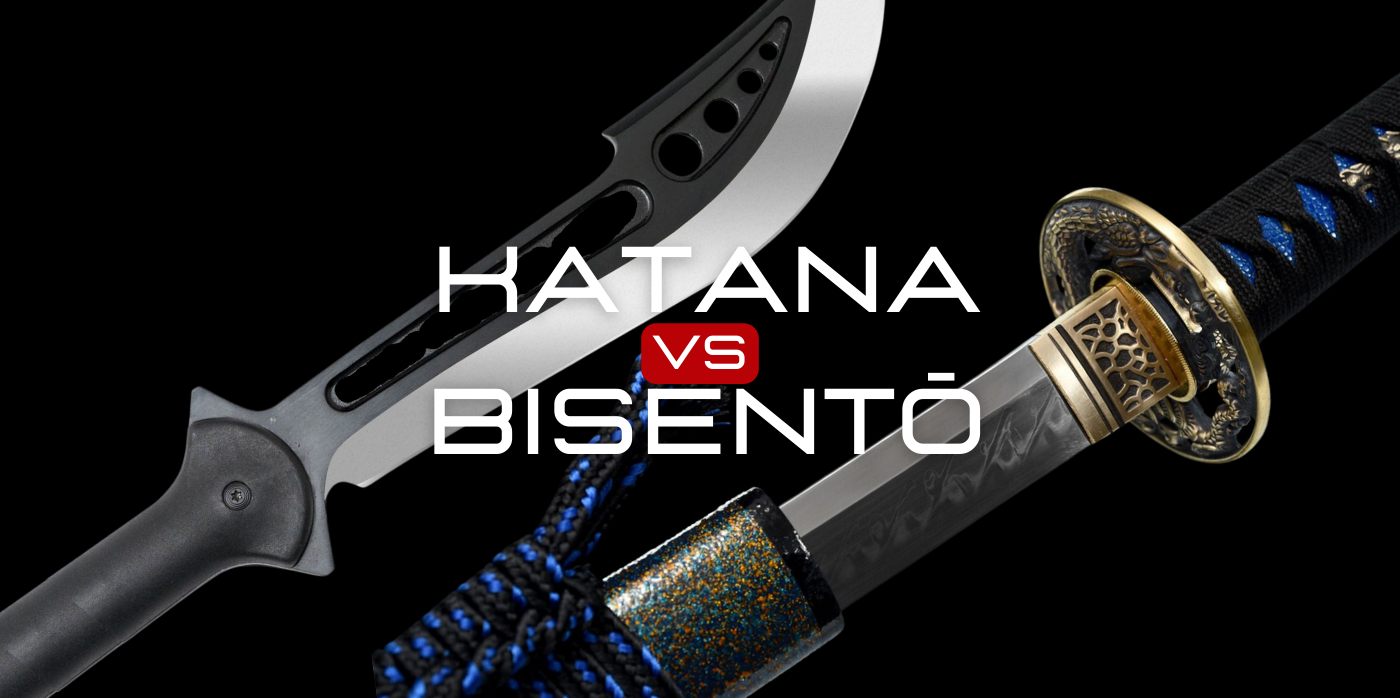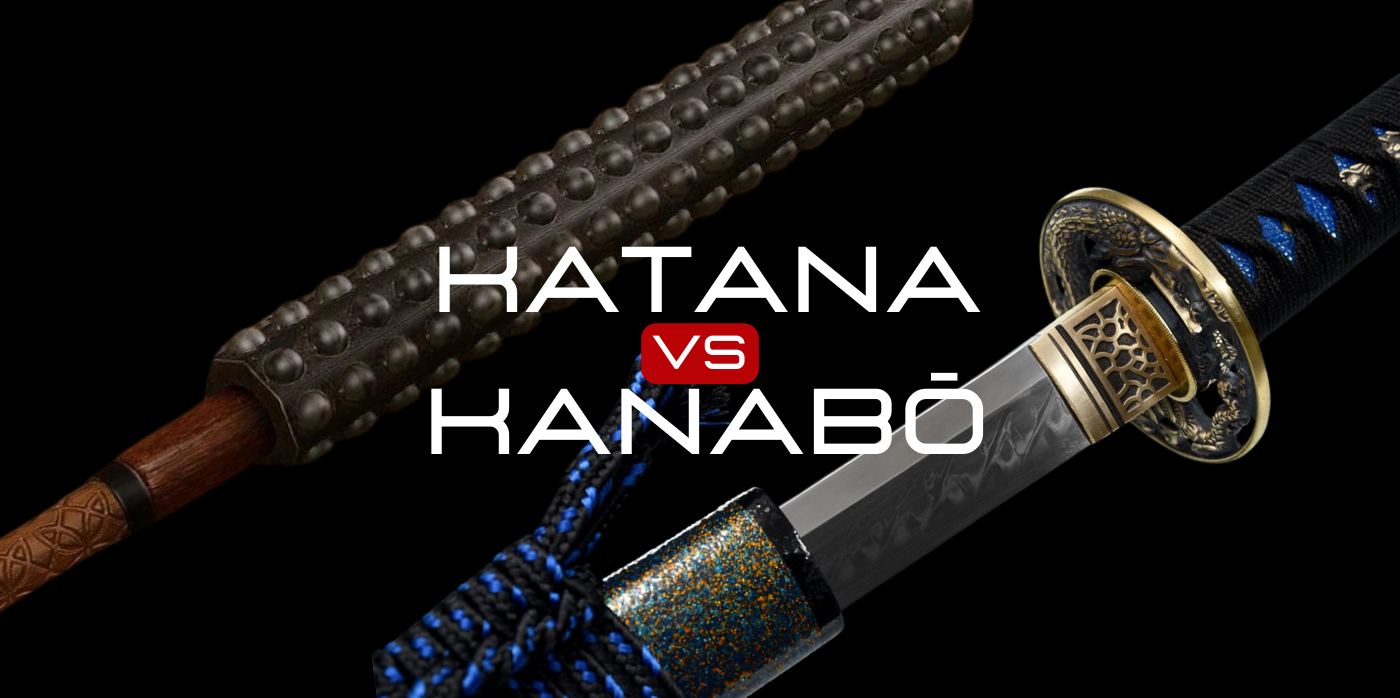What is a Bisentō
The Bisentō (眉尖刀) is a traditional Japanese pole weapon, renowned for its formidable presence on the battlefield. This polearm, characterized by its broad, curved blade mounted on a long shaft, was a staple among Japanese warriors.
The blade of the Bisentō is typically made from high-quality steel, forged and sharpened to a deadly edge. The broad, curved blade design allows for powerful slashing attacks. On the other side, the shaft is usually constructed from sturdy wood, often reinforced with metal fittings to enhance durability and balance. The length of the shaft varies, but it generally ranges from 5 to 7 feet, providing the wielder with significant reach.

Is Bisento a naginata?

The Bisentō and the naginata are both pole weapons used by samurai and foot soldiers in feudal Japan, featuring long shafts and curved blades. However, they have distinct differences. The Bisentō has a broader, heavier, and shorter blade compared to the naginata's slimmer, longer, and more curved blade. This makes the Bisentō heavier and suited for powerful, crushing strikes, whereas the naginata, being lighter, allows for quick, fluid movements and swift slashing. In summary, the Bisentō is designed for strong, decisive blows, while the naginata emphasizes agility and speed.
Use of the Bisento
The Bisentō design allowed for both slashing and thrusting attacks, making it versatile in various combat scenarios. The weapon was particularly effective against cavalry and could be used to pull riders from their horses, as well as to deliver devastating blows to both armored and unarmored opponents.
Bisentō combat style
The following video presents various combat techniques of the Bisentō, also known as Bisentō Jutsu. Powerful strikes, sweeping slashes, and precise thrusts, characterize this formidable pole weapon, demonstrating its effectiveness and versatility in traditional Japanese martial arts.
Bisento VS Katana
The Bisentō and the katana are iconic weapons of feudal Japan, each serving distinct roles on the battlefield. The Bisentō, a pole weapon developed during the Sengoku period, features a long shaft with a broad, curved blade. It is heavier, typically weighing between 5 to 10 kilograms, and is designed for powerful strikes, sweeping slashes, and thrusts, making it effective against both armored and unarmored opponents.
In contrast, the katana, which emerged in the Heian period, is a curved, single-edged sword renowned for its precision and cutting ability.
Lighter than the Bisentō, the katana weighs around 1.5 kilograms and emphasizes swift, fluid movements, and quick draw techniques, embodying the skill and honor of the samurai.

| Aspect | Bisentō | Katana |
|---|---|---|
| Type | Pole weapon | Sword |
| Origins | Sengoku period (15th-17th centuries) | Heian period (8th-12th centuries) |
| Design | Long shaft with a broad, curved blade | Curved, single-edged blade with a short, cylindrical handle |
| Usage | Used by samurai and foot soldiers for slashing and thrusting | Used by samurai for cutting and slashing |
| Blade Length | Shorter and broader than a katana blade | Usually around 60-80 cm (24-31 inches) |
| Pole Length | 6 to 8 feet long | No pole; has a handle (tsuka) about 25-30 cm (10-12 inches) |
| Weight | Heavier, around 5 to 10 kg (11 to 22 lbs) | Lighter, around 1 to 1.5 kg (2.2 to 3.3 lbs) |
| Combat Style | Involves powerful strikes, sweeping slashes, and thrusts | Emphasizes precision cutting, swift slashes, and quick draw techniques (iaido) |
| Armor Penetration | Effective against armored opponents due to its weight and blade shape | Less effective against heavy armor but highly efficient for unarmored or lightly armored opponents |




